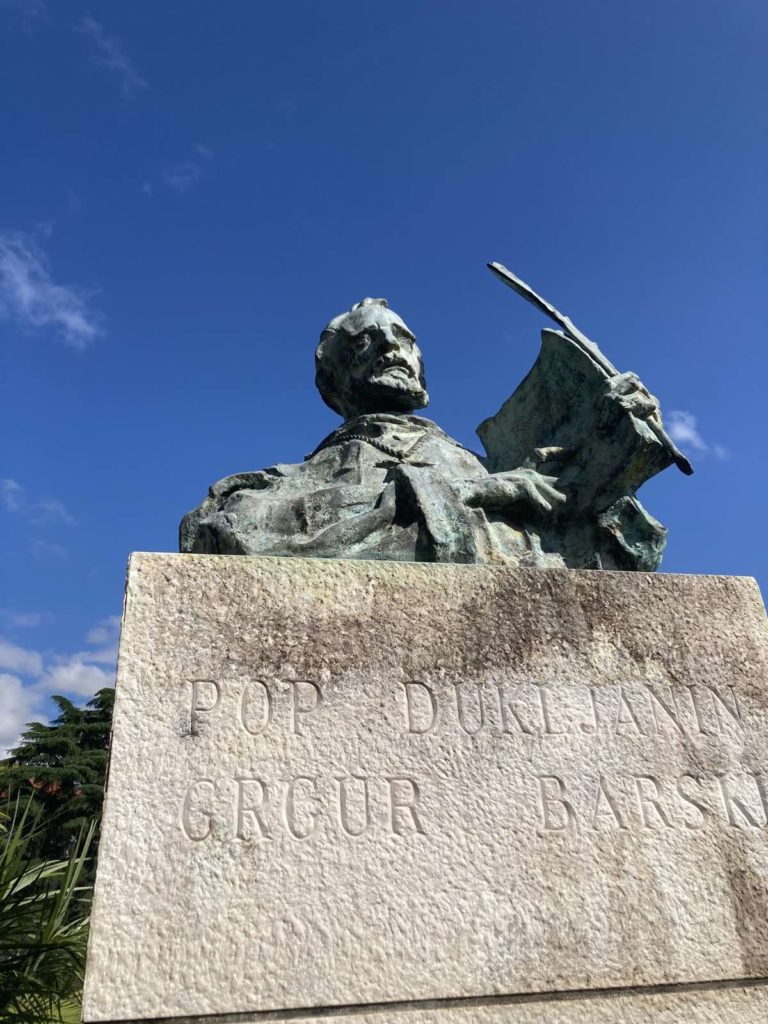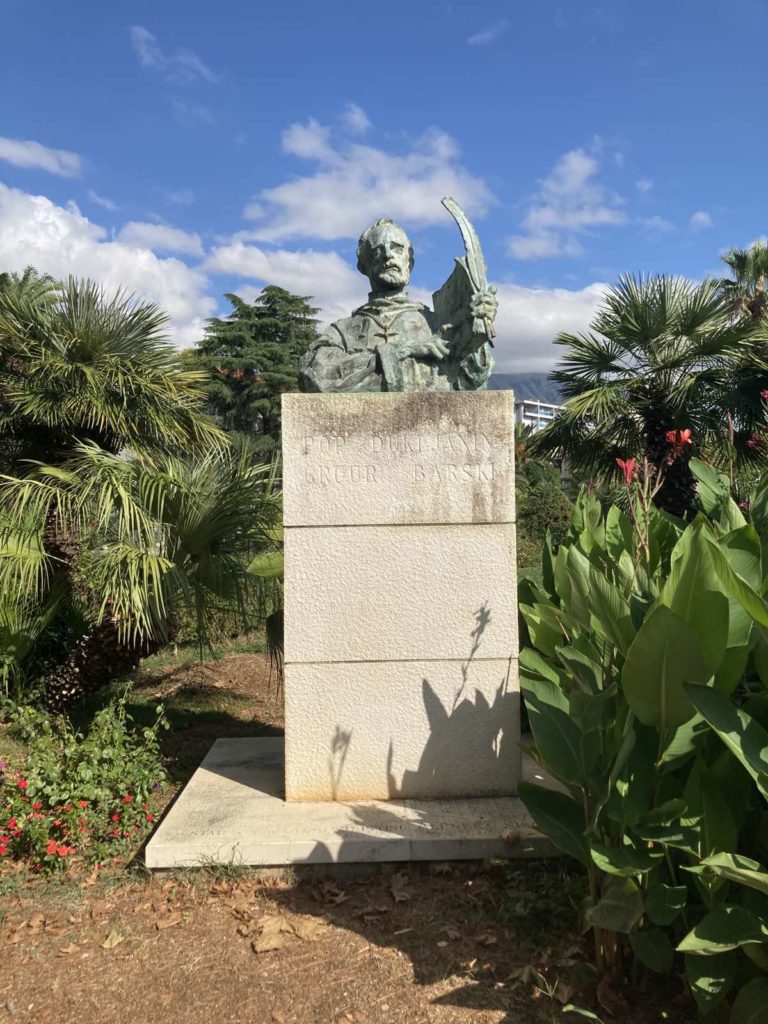Posjeti tvoj omiljeni SPOMENIK i objasni njegovu simboliku putem videa/posta.


ENGL: The anonymous Benedictine who wrote the “Kingdom of the Slavs” chronicle “Kingdom of the Slavs” in Bar in the middle of the 12th century is known in science as Pope Dukljanin, so his work is most often called “Chronicle of Pope Dukljanin”. Only the Latin translation of the chronicle has reached us, while all traces of the Slavic original, written most likely in Glagolitic script, have been lost. From the text of the chronicle itself, we learn that Pop Dukljanin wrote the history of his country inspired by the traditions of his predecessors in order to encourage the youth to defend the country. In his work, Pop Dukljanin described the history of Duklja from the end of the 5th to the middle of the 12th century and is the most significant domestic historical source for the study of Montenegrin early medieval history. While the described historical period from the end of the 5th to the end of the 10th century cannot be confirmed by other historical sources and is considered to be largely legendary, the events described from the end of the 10th to the middle of the 12th century are also known from other historical sources, which confirm the confidence of Dukljanin’s narration. In his work, the Dukljanin incorporated parts of an older text – the Life of Saint Vladimir from the 11th century, thus preserving the precious story of the Dukljan “king” Vladimir, the first saint-ruler from these areas, and his wife, the Macedonian princess Kosara. Author of the text: Prof. Aleksandar Radoman; Photo: Aleksandra Radoman-Kovacevic